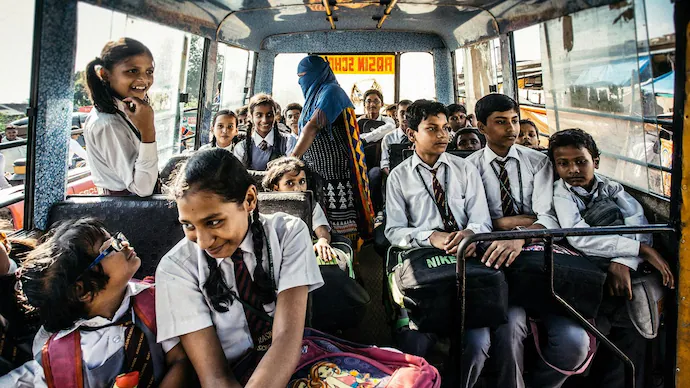- Courses
- GS Full Course 1 Year
- GS Full Course 2 Year
- GS Full Course 3 Year
- GS Full Course Till Selection
- Answer Alpha: Mains 2025 Mentorship
- MEP (Mains Enrichment Programme) Data, Facts
- Essay Target – 150+ Marks
- Online Program
- GS Recorded Course
- Polity
- Geography
- Economy
- Ancient, Medieval and Art & Culture AMAC
- Modern India, Post Independence & World History
- Environment
- Governance
- Science & Technology
- International Relations and Internal Security
- Disaster Management
- Ethics
- NCERT Current Affairs
- Indian Society and Social Issue
- NCERT- Science and Technology
- NCERT - Geography
- NCERT - Ancient History
- NCERT- World History
- NCERT Modern History
- NCERT Medieval History
- CSAT
- 5 LAYERED ARJUNA Mentorship
- Public Administration Optional
- ABOUT US
- OUR TOPPERS
- TEST SERIES
- FREE STUDY MATERIAL
- VIDEOS
- CONTACT US
Japan's Focus on Heat-Resistant Rice
Japan's Focus on Heat-Resistant Rice
14-09-2024
- Japan is currently facing a significant rice shortage due to extreme weather conditions. This has resulted in private rice stocks dropping to their lowest levels since 1999, and a projected 20% decrease in rice production by 2100.
- In response, Japan is focusing on developing heat-resistant rice varieties.
Japan's Focus on Heat-Resistant Rice
Impact of Extreme Weather
- Last summer's high temperatures and dry conditions led to lower rice yields and reduced grain quality.
- The current rice inventories (storage) are the lowest in 25 years.
- High temperatures damage starch accumulation in rice grains, leading to opaque (non-transparent) and mottled grains (covered with patches of different colours) that are less desirable for consumers.
- This lowers their market value.
- The country is now prioritizing the development of resilient rice varieties to secure its food supply in the face of climate change challenges.
Saitama Leads the Way in Heat-Resistant Rice Development
- Saitama Prefecture (local government area in Japan) is known for its hot summers. It is at the forefront of developing heat-resistant rice.
- The local government is funding research projects to create rice varieties that can withstand (resist) high temperatures.
- One such variety is 'Emihokoro,' meaning 'beaming smile.' This rice is being tested in various fields across Saitama to assess its performance under extreme weather conditions.
- Heat Tolerance: 'Emihokoro' is specifically designed to withstand high temperatures and dry conditions.
- Quality Improvement: The variety aims to minimize the appearance of cloudy, white flecks on rice grains, a common issue in heat-affected rice.
- Research and Development: Scientists at the Saitama Agricultural Technology Research Centre are cross-pollinating seeds to enhance the variety's heat resilience.
- 'Emihokoro' is currently being tested in 31 fields across Saitama Prefecture.
Cross-Pollination Techniques
|
Saitama Prefecture: A Hotbed for Rice Research
- Saitama Prefecture is located north of Tokyo and experiences a humid subtropical climate with hot summers. Due to its high temperatures, it is an ideal location for testing heat-resistant crops.
- Saitama plays a significant role in Japan's agriculture, focusing on rice production. The prefecture is also a major economic hub, contributing to various industries.
Rice varieties with GI tag in IndiaIndia is home to several rice varieties that have been awarded Geographical Indication (GI) tags, which help to recognize and protect the unique qualities and origins of these products. Here are eight notable GI-tagged rice varieties in India:
These GI-tagged rice varieties not only represent the agricultural heritage of India but also contribute to the local economies by promoting unique regional products |
Rice Cultivation in India
- Rice is grown throughout India, spanning from the southernmost regions to the northern Himalayas. It thrives in areas with latitudes ranging from 8° to 35°N and elevations up to 3,000 meters.
- Climatic Requirements: Rice is a crop that prefers hot and humid climates. It requires rich sunshine, high humidity levels, and a consistent water supply.
- Temperature Range: For optimal growth, rice needs temperatures between 21°C and 37°C. While it can tolerate temperatures as high as 40°C to 42°C, excessive heat can negatively impact its development.
- Soil Types: Rice cultivation is primarily practiced in two types of soils: upland and lowland.
- Upland Cultivation: In upland areas, rice farmers use various sowing methods, including broadcasting seeds, sowing behind the plow, or drilling.
- Lowland Cultivation: Lowland rice cultivation involves transplanting seedlings into flooded fields or broadcasting sprouted seeds directly into puddled fields.
Rice Production in India
- India is a major rice producer on a global scale, ranking 2nd globally (China is 1st).
- India continued to be the world’s top rice exporter in 2023 (according to APEDA) despite banning shipments of white rice and imposing a 20 per cent duty on parboiled rice.
- Thailand emerged as the 2nd-largest exporter, Vietnam 3rd and Pakistan the 4th-biggest shipper.




